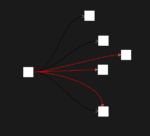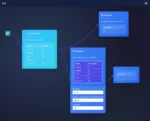
by tyler garrett | May 24, 2025 | Data Processing
In today’s rapidly evolving data landscape, the ability to efficiently handle data insertions and updates—known technically as upserts—is crucial for organizations committed to modern analytics, data integrity, and operational excellence. Whether managing customer details, real-time analytics data, or transactional information, a robust upsert strategy ensures consistency and agility. Understanding how upsert implementations differ across various data stores empowers strategic technology leaders to select the optimal platform to sustain data-driven growth and innovation. This blog post provides clarity on common upsert patterns, highlights pertinent considerations, and guides informed decision-makers through the architectural nuances that can shape successful data practices.
What is an Upsert?
An upsert—a combination of “update” and “insert”—is an operation in database management that seamlessly inserts a new record if it does not already exist, or updates it if it does. By merging two critical database operations into one atomic task, upserts simplify application complexity, optimize performance, and ensure data integrity. Understanding the power behind this hybrid command allows technology leaders to implement structured solutions streamlined around efficient data management.
Upsert logic plays a pivotal role across a vast spectrum of applications from real-time analytics dashboards to complex ETL pipelines. Efficient implementation significantly speeds up data synchronization, enhances data accuracy, and simplifies transactional handling. Rather than relying on separate logic for insert-and-update scenarios, businesses can encapsulate complex logic within scalable applications. Leveraging upserts appropriately can unlock productivity gains, ensuring development resources remain available for higher-value activities focused on business goals rather than routine technical intricacies. An optimized upsert strategy streamlines your data architecture and amplifies operational efficiencies.
Upsert Strategies in Relational Databases
Traditional SQL Databases and Upsert Techniques
In the relational database landscape—dominated by SQL-based platforms like PostgreSQL, MySQL, SQL Server, and Oracle—several standardized methodologies have emerged. Platforms usually implement specialized SQL commands such as “INSERT INTO… ON DUPLICATE KEY UPDATE” for MySQL or “INSERT INTO… ON CONFLICT DO UPDATE” in PostgreSQL. SQL Server utilizes the “MERGE” statement to cleverly handle parallel update and insert requirements, whereas Oracle similarly employs its powerful “MERGE INTO” syntax.
Leveraging these built-in relational database mechanisms provides reliable transaction processing, ensures data integrity rules are strictly enforced, and reduces complexity—thus enabling agile data teams to design powerful business logic without complicated boilerplate. Decision-makers adopting SQL-centric data architecture benefit from the simplified yet robust nature of regularized upsert logic, ensuring processes remain streamlined and maintainable.
Additionally, understanding fundamental SQL concepts such as the differences between UNION and UNION ALL can significantly enhance a technology team’s capabilities in structuring intelligent, performance-focused upsert solutions within relational environments.
NoSQL Databases: Understanding and Optimizing Upserts
MongoDB and Document-Based Stores
NoSQL Databases, typified by MongoDB, Cassandra, or Couchbase, favor flexibility, scalability, and agile schema design compared to traditional SQL databases. Among these, MongoDB upserts have gained prominence as a critical operational tool, using commands like “updateOne()”, “updateMany()”, or “findAndModify()” with the upsert:true option to facilitate efficient self-contained updates or inserts.
MongoDB’s efficient handling of native JSON-like document structures supports agile data mapping, enabling rapid development workflows. Development teams often find this dramatically simplifies data ingestion tasks associated with modern applications, real-time analytics, or IoT monitoring scenarios. Moreover, NoSQL upsert capabilities smoothly align with Node.js implementations, where flexible, lightweight data manipulation via MongoDB drivers helps foster streamlined data pipelines. For expert Node.js development guidance, you might explore our specialized Node.js consulting services.
Beyond mere performance gains, NoSQL platforms offer inherent fault tolerance, geographical data replication, and scalability across extensive datasets—key features for organizations focused on innovation. Purposeful upsert implementation in this domain provides an effective way to leverage NoSQL readiness for evolving business requirements and dynamic schema changes.
Cloud Data Warehouses: Optimizing Analytics Workflows
Redshift, BigQuery, and Snowflake Upsert Techniques
Cloud-native data warehouses such as AWS Redshift, Google’s BigQuery, and Snowflake streamline analytical workflows, leveraging massive scalability and distributed computing advantages. Upserting in these platforms often involves distinct replacement or merging approaches through SQL commands or platform-specific functions. For example, BigQuery offers MERGE operations tailored to effortlessly consolidate enormous datasets with impressive efficiency and accuracy.
Leveraging upserts within cloud data warehouses becomes especially beneficial in ELT (Extract, Load, Transform) architecture, which has consistently demonstrated powerful results in real-world analytical applications. Dive deeper into why this matters through our article covering real-use cases where ELT significantly outperformed ETL. Cloud data warehouses function impeccably within ELT workflows due to their capability to manage massive-scale merges and incremental refresh scenarios effectively.
Strategically selecting modern, cloud-native platforms for enterprise analytics, complemented by carefully planned upsert approaches, empowers analytic teams and improves query performance, data freshness, and overall agility. Effective upsert strategies in cloud environments ultimately drive organizational competitiveness and informed decision-making via timely, actionable insights.
Real-Time Upserts in Streaming Platforms
Apache Kafka and Stream Processing Solutions
Modern businesses increasingly depend on capturing and leveraging real-time data to maintain competitive advantages. The burgeoning importance of event-streaming platforms like Apache Kafka, coupled with message processing systems such as Apache Flink, Apache Beam, or Node.js-based frameworks, makes real-time upsert handling critical.
Stream processing solutions allow companies to execute operations that blend incoming data streams with existing data. Apache Kafka’s KTable abstraction, for example, elegantly supports event-sourced logic, ensuring data changes progressively update existing states rather than overwriting entire datasets. This real-time operational transparency notably enhances user experience and maintains privacy integrity—an aspect detailed further in our analysis of data privacy in fintech.
Implementing efficient real-time upserts can translate into meaningful benefits ranging from near-instantaneous financial transaction reconciliations to dynamic personalization in user dashboards. Businesses wielding the power of event-driven patterns combined with intelligent upsert practices drastically improve data immediacy, accuracy, and responsiveness.
Upsert Challenges and Best Practices
Avoiding Pitfalls in Implementation
Implementing an efficient upsert strategy requires understanding common challenges—such as performance bottlenecks, concurrency conflicts, and schema management. One common challenge arises when complex data transformations and pipeline dependencies create cascading impacts across data ingestion—a topic explored further in our article, fixing failing dashboard strategies. Clearly defining update-vs-insert hierarchies, ensuring unique identifier integrity, and handling conflicts predictably with minimal performance impact are key considerations in navigating pitfalls.
Best practices for handling upsert conflicts include careful management of unique constraints, smart indexing strategies, leveraging transactions for consistency, and choosing the appropriate database or data pipeline mechanisms. Businesses will benefit significantly by investing time upfront in understanding how their chosen platform aligns with core application data needs, analyzing real-world use cases, and planning capacity and concurrency limits.
Clearly articulated policies, well-defined procedures, and understanding your analytical goals shaped by informed strategic implementation set positive directions. To further foster consumer trust in accurate data handling, teams can explore our best-practice advice for enhancing user experience through clear privacy policies.
Conclusion: Strategic Upserts Drive Innovation and Efficiency
An effective upsert strategy transforms analytical workflows, optimizes data-driven agility, and provides businesses with significant competitive advantages. Choosing the correct upsert implementation strategy demands assessing your business goals, evaluating workloads realistically, and understanding both relational and NoSQL data nuances.
When implemented strategically, an optimized upsert solution strengthens data pipelines, enables insightful analytics, and powers impactful innovation across your organization. Explore several practical examples through our detailed report: Case studies of successful ETL implementations.

by tyler garrett | May 24, 2025 | Data Processing
Data evolves—a reality that modern enterprises understand only too well. As businesses strive to draw accurate insights from increasingly vast and dynamic data sets, effectively managing these changes becomes critical. Among the crucial challenges data teams face when developing robust analytics solutions or designing sophisticated data warehouses is the implementation of Slowly Changing Dimensions (SCDs). Addressing how dimensions—attributes of business relevance like products, customers, or internal resources—change over time is fundamental to enhancing analytical accuracy and reliability. But what exactly does this entail, and how can your organization seamlessly integrate Slowly Changing Dimensions into your modern data platforms? In this guide, we’ll unravel the strategic importance of these dimensions, explore standard SCD methodologies, and dive deep into best practices and innovations transforming how businesses maintain historical accuracy while enabling powerful analytics and decision-making capabilities.
Understanding Slowly Changing Dimensions (SCD)
To grasp the power and importance of Slowly Changing Dimensions, we first need clarity around the concept itself. A dimension, in the realm of data warehousing and analytics, signifies descriptive attributes of business entities—such as geographic location, pricing tiers, employee roles, or customer profiles—that typically provide context to numerical facts. Over time, some of these descriptive attributes can incrementally shift, altering how businesses analyze or compare datasets historically versus in real-time. This slow evolution poses unique complexities in accurately tracking and representing changes within your analytics framework. Employing established strategies to manage Slowly Changing Dimensions effectively addresses the inherently temporal nature of analytics data, enabling accurate historical reporting and future forecasting.
Moreover, thoughtful attention to Slowly Changing Dimensions enhances decision-making clarity and minimizes distortion in analysis outcomes. Consider a company adapting pricing structures, reorganizing a sales territory, or altering customer loyalty classifications—tracking these changes accurately ensures stakeholders can see valid comparisons, trends, and performance improvements over any given timeframe. Ensuring historical accuracy isn’t just an ideal, it’s critical for enterprises looking to achieve clear visibility into performance analytics, strategic planning, and precise decision-making. Businesses mature enough to leverage these historical insights constantly drive considerable growth using data analytics insights.
Exploring Types of SCD Approaches
Type 1: Overwriting Data (Lose Historical Data)
The most straightforward approach, known as Type 1 Slowly Changing Dimensions, involves directly overwriting existing attribute values when a change occurs, maintaining no prior historical state. While simple and easy to implement in most databases or solutions like MySQL, the significant limitation arises when historical insights become critical. Type 1 SCD is commonly used when historical accuracy has minimal relevance, typically when correcting data errors or updating minor fields irrelevant to analytical trend analyses.
However, while simpler, its ramifications regarding historical analytics can be profound. If a critical dimension—like customer region—is overwritten without traceability, historical sales reports generated afterward will inaccurately reflect past state, hindering accurate trend evaluation or strategic insight extraction. Before committing to a Type 1 methodology, companies must weigh the analytical implications closely. When deeper historical analysis is a priority, Type 1 alone rarely suffices; additional methods or a hybrid approach may be beneficial.
Type 2: Historical Data Versions (Maintain History)
The Type 2 keeping history approach significantly improves analytical accuracy by preserving historical data states alongside new ones. Whenever an attribute change occurs, Type 2 stores each distinct version of a dimension as a separate, versioned row, typically marked using effective dates or flags indicating current or historical status. Widely adopted within modern organizations utilizing sophisticated tools or analytical platforms, this method supports precise, detailed audit trails and facilitates historical trend analyses that remain valid despite attribute evolution.
By leveraging Type 2, your organization maintains reliable historical reporting integrity, empowering analysts and stakeholders to glean accurate insights and trends across changing dimensions. Type 2 is ideal for compliance-oriented sectors such as healthcare or non-profit institutions deploying business intelligence, as well as organizations particular about auditability, historical record accuracy, or improved forecasting abilities.
Type 3: Adding Historical Attributes (Limited History, Easier Implementation)
An alternative to Type 2, Type 3 Slowly Changing Dimensions maintain historical context within the same record rather than storing entirely new rows. This approach typically adds additional columns specifically indicating previous states, such as “previous_region” or “alternate_position,” alongside current attribute columns. It limits historical depth but keeps scenarios simpler, making SQL queries, business logic, and analytical calculations straightforward.
Though the easiest to implement and leverage within existing database structures, Type 3 approaches come with key limitations when tracking numerous historical changes or substantial complexity. While practical for tracking infrequent and limited attribute shifts, larger-scale analytical environments with frequent or more complex evolution are advised to implement Type 2 solutions or consider composable data analytics strategies to flexibly manage complexity.
Best Practices for Implementing SCD in Modern Platforms
Modern data platforms, especially cloud-based or hybrid architecture solutions, offer unprecedented opportunities to streamline effective SCD implementation. Not every approach fits every organization’s needs; evaluating your analytical goals, data volume, complexity level, and reporting requirements is crucial. Incorporating tools that support your chosen SCD strategy seamlessly across your analytic stack—such as cloud-based data warehouses (Snowflake, BigQuery), ETL or ELT processes, or leveraging managed analytics platforms—is essential.
Additionally, consistency is critical—establish clear rules, definitions, and governance surrounding attribute change management early in the project lifecycle. Data governance frameworks, documentation standards, and clearly defined attribute catalogues before deployment drastically minimize confusion or inaccuracies downstream. Businesses should consider combining modern SCD methodologies with carefully managed data governance and visualization best practices to avoid pitfalls related to confusion or complexity. Speaking of visualization, fostering effective data visualization techniques is integral to maximizing the value derived from a well-implemented SCD schema.
Moreover, avoid unnecessary complexity or clutter in data representation—keep visualizations clean and effective to ensure insights remain digestible and action-oriented.
Embracing Innovation—Micro Applications & APIs in SCD Management
Modern data architectures aren’t restricted only to traditional databases and warehouses. Emerging innovative solutions, particularly leveraging microservices and API integrations, enhance agility and flexibility in handling Slowly Changing Dimensions. Businesses increasingly turn toward specialized, easily manageable micro-applications and agile solutions. Indeed, micro-applications represent a core trend in agile data solutions, enabling companies to incorporate changes in dimensions more efficiently and rapidly into their analytics workflows.
Similarly, leveraging robust APIs from popular industry platforms—such as Procore for construction project management—further simplifies integration and enhances reporting accuracy. Services including Procore API consulting enable businesses to efficiently synchronize dimension-related data changes throughout various business-critical applications and platforms. By incorporating modern strategies and APIs, enterprises secure a meaningful advantage in operational agility, analytical accuracy, and data governance effectiveness, ultimately ensuring their Slowly Changing Dimension approach supports continuous and actionable insights for decision-makers.
Navigating Your Path to Optimal SCD Implementation
Whether building a custom solution or leveraging off-the-shelf technology, one thing is clear—implementing Slowly Changing Dimensions strategically is crucial to modern analytics and architecture success. Understanding your organization’s analytical priorities, resources, and capabilities is fundamental. Choose strategies that align best with your business requirements, maintenance complexity, historical accuracy needs, and technical infrastructure.
As the industry evolves, continuous learning and iteration will be your closest allies. Staying informed on data architecture trends ensures your SCD strategies remain relevant. Explore valuable insights on the future of analytics through updates such as the future of data engineering trends. It’s time for your business to harness the full value offered by strategically implemented Slowly Changing Dimensions and take informed steps towards better decisions, effective governance, and stronger analytics capabilities.

by tyler garrett | May 24, 2025 | Data Processing
In today’s fast-paced digital marketplaces and analytics landscapes, data accuracy and consistency are non-negotiable essentials. Enterprises handle vast streams of data flowing from myriad sources, making rigorous data validation a cornerstone for effective decision-making and analytics success. Imagine confidently predicting seasonal demand fluctuations or swiftly capturing insights from comprehensive business intelligence dashboards, without worrying about inconsistencies or errors polluting your analytics pipeline. Schema Registry integration emerges as the missing link to bridging the critical gap between data ingestion and dependable data-driven insights. By implementing a robust schema validation strategy, businesses can establish consistent data standards, reduce downtime, and enhance the overall quality and reliability of analytical outcomes. Whether strategizing ephemeral computing for burst analytics workloads or making key forecasts based on precise demand predictions, incorporating a Schema Registry directly impacts your analytics maturity. In this article, we’ll unpack exactly how Schema Registry integration enforces rigorous data validation to transform your pipelines into powerful engines of dependable analytics and confident strategy execution.
Understanding Schema Registries: A Core Component of Modern Data Pipelines
At the heart of any sophisticated, forward-thinking data strategy stands the concept of the schema registry. Simply put, a schema registry acts as a centralized repository where teams define, version, and distribute structured data formats—or schemas—across their data pipelines. As pipelines and data sources increase across an enterprise, ensuring uniformity in the structure and content of data becomes challenging without centralized governance. A schema registry addresses these challenges head-on by creating uniform standards for data formats, managing schema evolution, and breaking down silos of duplicated work.
A schema registry essentially provides a single source of truth, establishing precisely defined expectations for all your data streams. By clearly defining data structures, types, and allowable changes, schema registries greatly streamline and simplify the tasks of integration, ingestion, and analytics. Whether you’re making strategic decisions informed by accurate demand predictions or carefully digesting insights derived from complex queries involving aggregating and grouping data in SQL, having a schema repository ensures your data remains consistent, accurate, and reliable.
Beyond merely holding schema definitions, modern schema registries provide robust functionality, such as automated compatibility checks, schema versioning, evolution control, and validation. By serving as the primary authority on data schema integrity, these registries facilitate proactive communication and significantly reduce error rates and downtime common in deployments without structured schema management.
Benefits of Adopting Schema Registry Integration in Your Analytics Pipeline
Improved Data Quality and Consistency
In analytics and strategic decision-making, inaccurate or inconsistent data can result in costly miscalculations. Schema registry integration enforces strong validation rules, ensuring all data adheres to a clearly defined, versioned schema. For businesses, this translates to improved data quality—enabling executives and data analysts to trust their analytics outcomes consistently. Imagine pulling fresh data into Tableau Desktop without the persistent worry of inaccuracies or incomplete datasets; that’s exactly what schema registries help achieve. With predictable, reliable data, business users and stakeholders alike can confidently interpret analytics results and measure success against strategic goals.
Seamless Schema Evolution and Data Governance
Analytics teams occasionally need to evolve schemas to meet changing business demands and technical requirements. Schema registries facilitate controlled schema evolution through robust compatibility enforcement, ensuring changes don’t unintentionally disrupt downstream dependencies or reporting processes. Integrating controlled schema governance not only reduces the risk of unexpected downtime but also supports compliance and auditing practices. Schema registry principles naturally complement streamlined governance strategies necessary for compliance purposes or complex workloads, such as ephemeral computing for burst analytics workloads.
Reduced Development Time and Operational Overhead
Without schema registries, engineers often spend significant effort manually coordinating data compatibility and actively handling conflicts and discrepancies. Schema registries automate many of these tasks, freeing engineers to focus their attention on more strategic challenges rather than manually tracking schema versions. Overall, adopting a schema registry reduces wasted engineering resources and streamlines your analytics platform and data management pipeline.
Implementing Robust Schema Validation In Your Organization
Successful schema registry adoption doesn’t happen overnight or through technical implementation alone—it requires strategic planning, thoughtful integration into existing processes, and buy-in across teams. At Dev3lop, we regularly assist companies with similar strategic integrations through our specialized NodeJS consulting services, providing both technical expertise and strategic insight.
Assessing Requirements and Use Cases
Begin schema integration by thoroughly cataloging your analytic data flows, sources, and key stakeholder requirements. Clearly understand use cases such as predictive modeling, operational analytics, and strategic decision support. Consider the complexity of schemas, frequency of schema evolution, and common pain points you face today. With your analytics strategy clearly outlined, adopting a schema registry will offer your team a precise platform to enforce rigorous structure, improving data accuracy across large-scale operational deployments and embedded analytic applications.
Selecting the Right Schema Registry Solution
Different schema registry solutions coexist today—such as Confluent’s Schema Registry, Apache Avro, JSON Schema Validation services, or Google’s Data Catalog. Prioritize solutions that align with your existing analytics tech stack and pipeline architectures. If reliability and consistency represent core analytics infrastructure concerns, ensure the chosen registry seamlessly integrates directly with your current analytical BI tools, AI models, or specialized data warehouses. For further clarity and strategic context regarding data repositories and analytics pipelines, explore our guide of the essential 20 tips executives need to understand about data warehousing.
Integrating Schema Registry into Your Analytics Infrastructure
Integration of schema validation should leverage continuous integration and continuous deployment (CI/CD) methodologies. Automate schema checks at ingestion or pipeline staging to ensure validation of each batch or real-time data import, and ensure that schema registry validation processes don’t add significant latency overhead. Regularly monitor schema validation errors to capture trends before infrastructure issues emerge and leverage clear schema evolution workflows for efficient change management. A strategic approach integrating schema registry with your analytics infrastructure ensures scalable, long-term analytical maturity.
Schema Registry Integration: Strategic Impact and Long-Term Value
When it comes to extracting increasingly valuable insights through analytics, precise governance and reliable data structures matter significantly. Schema registries form the strategic foundation supporting better long-term analytics outcomes. Businesses that adopt schema registries improve data reliability, reduce errors, ensure efficient data governance, and proactively support sophisticated analytics use cases. In industries ranging from non-profit organizations utilizing comprehensive Business Intelligence for Non-Profits capabilities, to global enterprises handling Big Data across multiple teams and specialized analytic workloads, schema registries amplify the quality, scalability, and maturity of your analytics strategy.
By ensuring reliable, high-quality data defines every operation, schema registries empower enterprises to implement state-of-the-art analytics strategies and accelerate strategic decisions. With schema validation seamlessly integrated and automated in your pipelines, analytics tools will effortlessly scale alongside your business plans—delivering smarter insights, deeper precision, and more confident execution.
Schema registry integration isn’t just another technical hurdle; it’s a strategic imperative that advances overall analytics maturity, unlocking lasting competitive advantages and helping visionary businesses stay ahead of the curve.

by tyler garrett | May 23, 2025 | Data Processing
In the age of data-driven decision making, clarity, integrity, and transparency of your data have never been more critical. Yet, as organizations evolve and scale, so does the complexity of data operations. Decision-makers and data teams face the daunting task of answering vital questions: Where is this field data coming from? How has it been transformed throughout the analytical pipeline? Can we confidently explain this data’s origin to auditors or stakeholders? To decisively address these challenges, adopting a rigorous field-level data lineage approach becomes essential. Explainable data lineage transforms ambiguous, opaque data journeys into transparent, traceable operations, delivering actionable insights and empowering organizations toward strategic innovation and reliable analytics.
What is Explainable Data Lineage and Why Does it Matter?
At its core, explainable data lineage is a structured approach to tracking the flow, transformations, and interdependencies of data through entire analytical pipelines, down to the individual data field level. This means not just accounting for broad datasets, but also capturing exactly how each data field evolves and changes as it travels through extraction, transformation, loading (ETL) processes, and analytic transformations. Imagine having a clear map tracing your data’s journey from raw source to refined insight, one field at a time, enabling any stakeholder to rapidly grasp its full history and relevance.
This capability is indispensable as enterprise analytics increasingly rely upon complex integrations, real-time analytics interfaces, and robust business intelligence tools such as Power BI consulting services. With many layers of processing between raw input and business user dashboards, subtle changes or errors in single fields can lead to significant misinterpretations and wrong decisions.
Explainable data lineage mitigates these risks by providing transparency across data operations, facilitating audits, compliance, data governance, and quality assurance processes. With growing regulatory pressures around compliance and data transparency, explainable data lineage isn’t just a technical luxury; it’s becoming a foundational necessity for organizations committed to trustworthy analytics.
How Field-Level Lineage Empowers Better Decision-Making
Granular, field-level lineage tracking dramatically improves decision-making effectiveness by eliminating ambiguity around data origin and reliability. When decision-makers have full visibility into the field-level transformations within their analytical pipelines, they gain confidence in data insights, ensuring trustworthy output to stakeholders and customers alike.
Think about demand forecasting processes within supply chains. Comprehensive explainable data lineage ensures analysts know precisely how historical sales records, seasonal adjustments, supplier inventory systems, and real-time feedback streams contribute to forecasts. As highlighted in this article on optimizing inventory levels through demand forecasting, clarity of data lineage reduces misinterpretations, minimizes inventory overages, and avoids shortage costs.
Likewise, when tracking brand sentiment through cross-channel analytics, outputs must be traceable to specific qualitative and quantitative inputs. Field-level lineage transparency ensures that marketing strategies are based on accurate, understood data points. Learn more about this topic in our article on measuring brand sentiment across channels.
Without comprehensive lineage visibility, stakeholders risk critical business decisions that rely on inaccurate or misunderstood data fields. Field-level data lineage empowers decision-makers with credible, auditable, and transparent analytics.
Implementing Effective Field-Level Data Lineage Tracking
The most accurate and robust data lineage implementations start with strong foundations at the data transformation phase—something typically achieved during ETL processes. Successful organizations meticulously document transformations, capturing changes at each step. As outlined in our article featuring successful ETL implementations across industries, careful lineage planning at this phase can significantly simplify later lineage tracking efforts.
Implementation often involves establishing structured metadata practices that clearly record field mappings, transformations, formulas, and dependencies. Leveraging robust data cataloging tools alongside modern business intelligence platforms like Tableau Desktop, which we’ve discussed extensively in our blog, including articles like the one on Tableau data extract BI software, makes lineage logic transparent, traceable, and accessible to technical and non-technical stakeholders.
Another smart starting point is enhancing data tracking capabilities within SQL statements themselves. Understanding every data lineage begins from mastering foundational query capabilities such as those discussed in our beginner-friendly article on getting started with the SELECT statement. By establishing clear, understandable query structures early on, organizations significantly accelerate lineage tracing processes later in their data operations.
Field-Level Lineage’s Role in Real-Time Analytics and Innovation
Real-time analytics opens tremendous opportunities for companies fully equipped with robust explainable data lineage processes. Lineage transparency at the field level ensures that even rapid, automated transformations in real-time applications remain reliably documented. Whether capturing live customer interactions for personalized marketing campaigns or instantaneously processing IoT sensor signals for predictive maintenance in manufacturing, explainable lineage safeguards accuracy, reliability, and compliance.
In our exploration of real-time analytics architecture patterns, we established that without accurate field-level lineage, real-time analytics pipelines quickly become riddled with problems like data misalignment, mistaken assumptions, and inability to diagnose operational disruptions. Conversely, an explainable data lineage approach reduces these risks and positions your analytics strategy as robust, credible, and scalable— driving vast opportunities for practical innovation and operational excellence.
This transparency thus becomes foundational as organizations leverage analytics innovation, ensuring that experimental strategies translate accurately into actionable real-time insights while maintaining trust across stakeholders.
The ROI and Strategic Advantage of Investing in Explainable Lineage
An upfront investment in robust, explainable field-level data lineage strategies consistently delivers compelling returns for organizations. Built-in transparency drastically reduces time spent troubleshooting data issues, accelerates analytic processes, and bolsters stakeholder trust, ultimately resulting in significantly elevated data effectiveness and operational agility.
We’ve seen multiple cases where clearer lineage structures directly lead to faster calculations and smoother operations, much like the scenario covered in our piece on writing fast calculations in Tableau Desktop. Efficient utilization of analytics enhances productivity, reduces misunderstandings among stakeholders, and accelerates corporate agility.
Moreover, adopting explainable data lineage aligns with strategic consulting approaches. As we discussed extensively in our article explaining why hourly consulting often outperforms retainers, it provides flexibility, clarity, and innovation advantage—essential components in today’s technology-driven business landscapes.
The improvement in your data lineages leads directly to enhanced stakeholder confidence, compliance certifications, smoother internal audits, and innovative leaps forward in analytics sophistication. Thus, explainable lineage isn’t just a technical convenience—it’s a proven strategic advantage, integral to staying competitive and innovative in today’s data-driven economy.
Conclusion: Driving Forward With Confidence and Clarity
Explainable data lineage at the granular, field-level marks much more than good technical practice—it’s a strategic enabler of robust analytics. Whether it’s maintaining regulatory compliance, upgrading trust and transparency, or unleashing powerful innovation, explainable lineage is no longer optional; it’s a vital analytics capability.
Working with the right expert advisors can streamline the process. At our firm, we leverage deep experience liberating organizations from complex data lineage ambiguity—directly benefitting from Power BI consulting services and holistic analytics optimization to confidently trace your data evolution and leverage analytics at every workflow level.
Adopt explainable lineage today and elevate your organization’s analytics maturity, innovation readiness, stakeholder satisfaction, and competitive edge. Clarity is power, and explainable field-level data lineage is your path toward analytical excellence.

by tyler garrett | May 23, 2025 | Data Processing
In today’s competitive market where data volume and complexity grow exponentially, organizations must leverage advanced technical strategies to maintain efficiency and innovation. As data ecosystems become increasingly intricate, parallel processing emerges as a crucial technique to achieve rapid data analysis and accurate real-time insights. Among several parallel computing patterns, Fan-Out/Fan-In represents a scalable and robust architecture designed to maximize parallelism, reduce latency, and simplify complex processing tasks. Decision-makers tasked with optimizing data pipelines and improving analytical capabilities will find that implementing Fan-Out/Fan-In patterns not only streamlines data processing activities but also enhances operational visibility, significantly driving informed decision-making across multiple industries.
What is Fan-Out/Fan-In, and Why Does It Matter?
Fan-Out/Fan-In is a parallel processing pattern that allows data engineers to break complex data tasks into smaller tasks, execute them simultaneously (Fan-Out), and then aggregate the results back into a unified outcome (Fan-In). Unlike linear or sequential processing, Fan-Out/Fan-In leverages the power of distributed systems to enable concurrent operations. This pattern ensures scalable performance and optimal resource utilization even when processing massive volumes of data—a core capability for enterprises seeking agility and real-time responsiveness.
Implementing Fan-Out/Fan-In is especially critical for businesses addressing modern data demands where timely insights can significantly amplify a competitive advantage. Whether processing streaming data, batch operations, or performing complex analytical computations, the Fan-Out/Fan-In pattern dramatically accelerates performance while maintaining accurate and coherent results.
However, to effectively adopt this parallel processing model, decision-makers need strategic alignment with experienced expertise, such as utilizing our Data Engineering Consulting Services to navigate intricate architecture considerations and optimize outcomes aligned with your organizational objectives.
Practical Applications: Integrating Fan-Out/Fan-In into Data Pipelines
The versatility of Fan-Out/Fan-In allows for effective integration into diverse data scenarios. Typical business applications include real-time analytics, fraud detection, manufacturing analytics, and supply chain optimization. For instance, financial sector companies commonly utilize a Fan-Out architecture to execute simultaneous processing tasks across large transaction volumes, immediately identifying anomalies or fraudulent activities. By leveraging parallelism and subsequently aggregating results through a Fan-In approach, organizations significantly improve detection timeframes and response efficiency.
For example, linking real-time fraud detection strategies efficiently incorporates parallel processing, perfectly illustrated in our blog article Webhooks 101: A Game-Changer for Real-Time Fraud Detection. Furthermore, Fan-Out/Fan-In methodologies are effectively paired with manufacturing and production scenarios, aligning operational output directly with demand forecasts. Discover precise use cases by exploring our insightful piece Streamlining Production Planning: Aligning Manufacturing with Anticipated Demand.
Additionally, Fan-Out/Fan-In principles are easily adopted into analytics-focused workflows. For instance, when enterprises conduct complex analytical functions within a data lakehouse environment, parallel processing via this pattern significantly improves analytical readiness, supporting timely decisions. Understand deeper implementation guidelines by exploring our expertise captured in Data Lakehouse Implementation: Bridging the Gap Between Lakes and Warehouses.
Design Considerations When Applying Fan-Out/Fan-In
Implementing Fan-Out/Fan-In requires thoughtful system architecture design, ensuring robustness, performance efficiency, and optimal resource utilization. The most critical aspect of effectively leveraging this pattern involves carefully analyzing how tasks can be partitioned logically. The goal in Fan-Out processing is to create balanced segmentation of tasks—each performing roughly equal workloads—allowing parallel streams to optimize computational resources and minimize idle times.
System design should also carefully manage data dependencies and synchronization requirements in the Fan-In phase. Successful Fan-In gathers the parallel outputs from the distributed tasks accurately, ensuring integrity and consistency. Strategies to proficiently handle synchronization include using properly configured event-driven architectures, optimized queuing solutions, and sophisticated workflow orchestration tools. To master the principles behind building well-constructed workflows and deliver predictable outcomes, organizations must elevate their technical prowess or partner with experts who understand the nuanced implementations necessary for optimum performance.
Leveraging advanced technologies can further streamline efficiency in parallel pipeline configurations. For instance, intelligently using range filtering can significantly reduce processing overhead by targeting the exact subsets of data required for specialized computations. This ensures data flows seamlessly and efficiently between multiple nodes. For additional insights into structuring more precise selection criteria in parallel tasks, consider our insightful guide on Mastering Range Filtering with the SQL BETWEEN Operator.
Challenges to Anticipate When Adopting Fan-Out/Fan-In Patterns
While Fan-Out/Fan-In provides powerful capabilities for parallel processing, decision-makers must anticipate several technical and operational challenges. One frequent challenge is ensuring workload distribution remains even across processing nodes. If tasks aren’t evenly distributed—whether due to data inconsistency or improperly assessed complexity—processing performance can degrade, negatively impacting the overall advantage provided by parallel execution.
Additionally, the increasing complexity of distributed systems introduces greater overhead in handling errors, managing retries in failed tasks, and ensuring task consistency. The Fan-In stages of data aggregation also add complexity as synchronization overhead must be thoroughly planned and addressed during architectural design phases; failure to manage this appropriately introduces unnecessary latency or discrepancies in data.
Organizations aiming for seamless and efficient parallel implementations should consider utilizing advanced architectural solutions such as ZeroETL, offering promising frameworks toward real-time analysis without excessive complexity. Discover more about this innovative approach by browsing our strategic overview of ZeroETL Architectures – The Future of Real-Time Analytics.
The Importance of Scalability and Flexibility in Parallel Data Processing
Businesses do not benefit from rigid data architectures that fail to scale appropriately. Fan-Out/Fan-In patterns inherently deliver scalability and flexibility—advantageous for achieving growth in rapidly evolving business environments facing fluctuating workloads and increasingly diverse data needs. Scalability, notably attainable in Fan-Out patterns through parallelization, advises future-proofing capabilities, providing organizations essential elasticity during peak data periods or analytical processing surges, without necessitating substantial overhead increases in infrastructure or spend.
Furthermore, Fan-Out/Fan-In patterns mesh seamlessly with advancements in artificial intelligence and machine learning. AI-driven tools integrated within parallel data processing frameworks accelerate analytics and deliver innovative decision-making capabilities. As explored extensively in our article, AI-Powered Tools That Transform Decision-Making in 2025, embracing future technologies within established agile architectures enhances your organization’s analytics landscape, ensuring competitive advantages extend well into upcoming industry innovations.
Decision-makers looking toward robust, highly-scalable solutions can significantly benefit from adopting parallel patterns like Fan-Out/Fan-In, maximizing usage of available data resources strategically, without compromising performance or timeliness.
Summary: Strengthening Data-Driven Decisions with Fan-Out/Fan-In
Regardless of your organizational maturity or industry vertical, implementing Fan-Out/Fan-In methodologies positions your enterprise at a competitive intersection of innovation, agility, and efficiency. By consistently enabling timely, accurate insights and ensuring optimal infrastructure utilization through parallel processing, you gain unprecedented clarity in business environments driven by data.
As specialists in data, analytics, and innovation, we empower organizations to harness the transformative potential of advanced data capabilities effectively. Consider leveraging specialized expertise through our strategic approach to data engineering, analytics optimization, and tailored consulting solutions designed uniquely for your organization’s evolving needs.
Explore practical, industry-specific applications beyond standard solutions with our article on 11 Ideas for Using Data Analytics in Austin, Texas, and discover ways innovation easily becomes actionable when approached strategically.
Invest strategically in your data pipeline architecture. Unlock the full potential of Fan-Out/Fan-In for scalable, responsive, and efficient analytics.

by tyler garrett | May 23, 2025 | Data Processing
In an age where adaptability, scalability, and smart analytics are critical for growth, businesses serving multiple clients—each with unique data landscapes—need data pipelines that flexibly adapt without breaking stride. Enter data pipeline parameterization, a potent approach enabling organizations to dynamically manage multi-tenant systems effortlessly. By leveraging intelligent parameterization strategies, enterprises can maximize efficiency, maintain compliance, and deliver personalized insights at scale. In this guide, we’ll unpack how strategic parameterization of your multi-tenant data pipelines can significantly elevate analytics capabilities, enable quicker decisions, and support unprecedented innovation.
Understanding Multi-Tenancy and the Role of Parameterization
Within any analytics-driven enterprise, multi-tenancy refers to a single instance of software infrastructure tailored to handle multiple separate clients—or tenants—with custom needs. Each client expects highly personalized analytics experiences without sacrificing speed or reliability. Managing these dynamic requirements poses significant infrastructural challenges, especially around scalability and adaptability.
This is precisely where data pipeline parameterization shines. Parameterization involves embedding configurable components within your data pipelines, allowing the pipeline to adapt its behavior based on tenant identifiers, specific scenarios, or particular environments. Rather than creating separate, hard-coded data integrations for each tenant, organizations can strategically use runtime parameters to adjust pipeline activities dynamically. For instance, parameters can define what queries to use, or dictate how data transformations occur, ensuring maximum flexibility without increasing complexity.
Furthermore, parameterization significantly simplifies upkeep and upgrades. Imagine scenarios faced when upgrading analytic infrastructures similar to those encountered when organizations need to upgrade Tableau Server. Strategic parameterization enables smoother upgrades by reducing reliance on static, coded client-specific configurations. By leveraging dynamic parameters, organizations can efficiently manage updates, troubleshoot faster, and minimize downtime—critical benefits in competitive business climates.
Key Benefits of Parameterized Data Pipelines in Multi-Tenant Environments
Enhanced Scalability and Flexibility
A well-parameterized data pipeline effortlessly scales to support multiple tenants, with each relying on varying volumes and complexities of data. Businesses can quickly onboard new clients or scale data integration efforts without extensive code modifications or individual pipeline maintenance. With scalable parameterization, growth becomes seamless, enabling companies to rapidly expand analytics capabilities as demand fluctuates. This agile approach parallels methodologies found in practices for improving transportation analytics, emphasizing responsiveness to rapidly evolving business conditions.
Simple & Centralized Maintenance
Parameterization shifts complexity from multiple integrations toward centralized management of dynamic rules and configurations. Scenario-specific parameters managed in centralized repositories simplify maintenance involving updates, security patching, and troubleshooting. This centralization streamlines efficiency, simplifies operations, and enhances visibility across the entire analytics data stack—an advantage similar to transforming raw, chaotic information into actionable intelligence through ETL data transformation.
Improved Data Privacy Compliance
Data privacy regulations continue to evolve rapidly worldwide, substantially impacting multi-tenant processing strategies. Parameterization enables dedicated configurations to address specific regulatory compliance requirements uniquely suited to each tenant or jurisdiction. Enterprises operating globally can easily adjust parameters to enforce correct data privacy or masking rules, thereby ensuring stronger compliance posture. Consider the strategic insights offered in the guide on data privacy regulations impacting analytics. By leveraging parameterization-focused compliance measures, organizations remain dynamically responsive to changing regulatory landscapes.
Best Practices for Parameterizing Multi-Tenant Data Pipelines
Standardize Your Parameter Strategy
Effective parameterization begins with clearly defining naming conventions, usage patterns, and parameter-driven integration methodologies. Standardized and consistent practices across all integrations ensure developers and administrators can swiftly navigate complex resources and rapidly make necessary pipeline adjustments. A well-structured parameter strategy minimizes ambiguities and prevents integration errors, ensuring consistent long-term operations across multiple tenants.
Use Metadata-Driven Pipelines
Incorporating metadata-driven data pipelines further enhances the value of parameterization. Metadata repositories provide structured information such as tenant configurations, naming schemas, workflows, and transformation rules centrally stored. Leveraging metadata repositories enables quick lookups that can pass relevant configurations as runtime parameters. This dynamically drives pipeline activities on-demand, significantly reducing manual interventions and accelerating client onboarding.
Security and Auditability by Design
Parameterized pipelines need enhanced security mechanisms, especially since diverse, tenant-specific data typically moves through shared processes. Security policies and parameter configurations must be securely stored in encrypted repositories. Safeguards like role-based access control, formal logging, and auditable parameter modifications ensure compliance and mitigate risk. Enterprises can ensure robust auditing and compliance, aligning with globally recognized standards in data privacy regulations and addressing common analytical compliance concerns.
Real-World Use Cases of Parameterized Pipelines
Demand Forecasting Across Industries
One powerful real-world example of parameterized data pipelines emerges via sophisticated analytic platforms delivering accurate forecasts tailored across multiple business verticals. Retail and manufacturing businesses, for instance, greatly benefit from incorporating parameterized pipelines into their forecasting processes. These configurable pipelines enable dynamic switching between varying forecasting models and data sets based on clients’ specific requirements—beneficial in achieving precise demand prediction. This capability enhances logistics planning, inventory efficiencies, and ultimately, customer satisfaction.
Brand Sentiment Analysis Across Channels
Another clear demonstration of parameterization involves marketing analytics. Organizations analyzing brand sentiment across multiple channels can dynamically alter query parameters, social media references, sentiment measurement criteria, or duration thresholds based on client-specific goals. Parameter-driven pipelines quickly ingest, analyze, and produce actionable insights based on dynamically adaptable parameters, much like strategies highlighted in measuring brand sentiment with analytics. Parameterization allows seamless and continuous adaption, empowering responsive and well-informed marketing strategies across diverse digital landscapes.
Getting Started with Data Pipeline Parameterization
To successfully embrace data pipeline parameterization, organizations should first conduct a comprehensive infrastructure analysis—mapping existing systems and processes with strategic objectives clearly in mind. Partnering with experienced data professionals, such as experts offering dedicated MySQL consulting services, positions you to effectively navigate database complexity, deliver effective transformations, and ensure seamless integration.
Further enhance your analytics infrastructure by exploring user-friendly tools like Tableau—a proven market leader in analytics visualization and decision support. For seamless self-service exploration, empower your analytics team by downloading Tableau Desktop. Equipping teams with intuitive technologies ensures successful realization of parameterized pipeline benefits.
Finally, define clear parameterization goals and workflows, and start small by selecting pilot projects and specific tenant scenarios to validate parameter configurations and impact assessments before scaling enterprise-wide.
Conclusion: Embrace Smart Flexibility for Sustainable Analytics Innovation
Multi-tenant data processing systems depend heavily on pipeline flexibility to provide personalized, scalable, and efficient analytics insights to diverse client requirements. Strategic data pipeline parameterization is a game changer, empowering organizations to deliver rapid, secure, and compliant analytics services at scale. Embrace these robust best practices and start using parameterization to ensure continual improvement in your analytics offerings.
Ultimately, an intelligently parameterized framework translates to unmatched competitive advantages, superior business insights, better resource utilization, and a future-ready analytics platform primed for continued growth and innovation.






























